There is no simple answer when determining which of the big cats – lions, tigers, leopards, and jaguars – is the best climber. Each animal has unique strengths and limitations, making it impossible to determine which one is the ultimate best. However, other scientists believe that the lion is the king of the jungle. Their massive physique and muscular back legs make them natural climbers, swimmers, and runners.
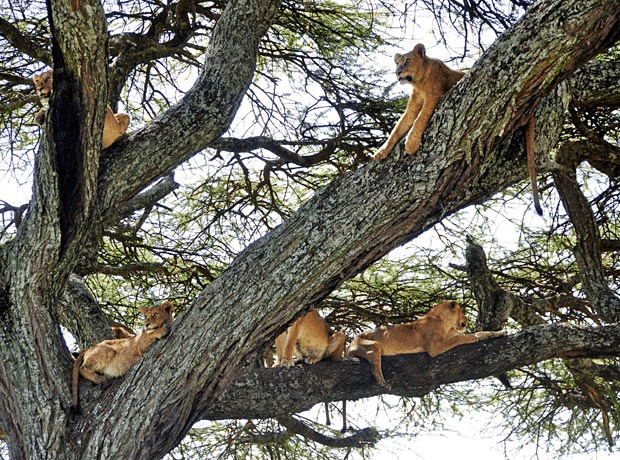
Source: google.com
10 Wild Cat Species And Where To See Them In The Wild
1. Tiger (Panthera tigris)
The Siberian tiger, weighing 320 kg, is the world’s biggest cat. Unfortunately, the tiger is the most threatened of the large cats. In the early half of the twentieth century, tigers were discovered in Turkey and the Indonesian islands of Bali and Java. These three subspecies are now extinct. The South China tiger has already crossed the point of no return, with only about 20 individuals remaining in the wild. The five surviving subspecies are all in various degrees of extinction.
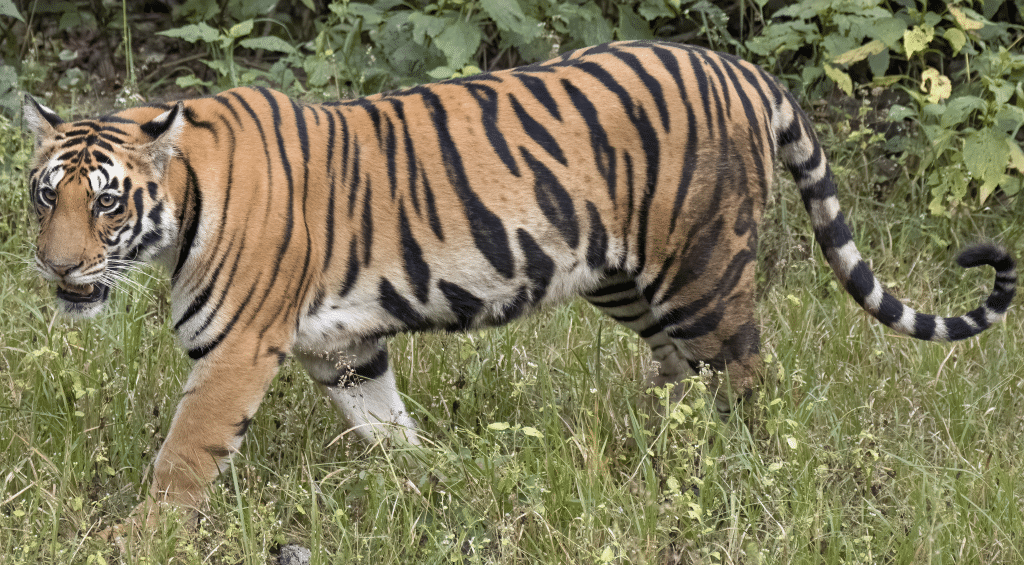
Source: google.com
We also almost lost the Siberian tiger, with as few as 40 individuals reported to live in Siberia’s vast woods in the 1940s. Thankfully, significant conservation measures have been implemented in the Russian Far East in recent decades, and the monarch of the Siberian taiga has been brought back from the verge of extinction.
Today, most of the remaining tigers are of the Bengal subspecies found throughout the Indian subcontinent. Unsurprisingly, India is the best spot in the world to witness wild tigers. Kanha and Bandhavgarh National Parks in Madhya Pradesh are two of the best places in India to see tigers in the wild.
2. Lion (Panthera leo)
The Lion, the world’s second-largest animal, used to roam much of Africa and Europe and Asia. The population is currently reduced to a few dispersed populations in Sub-Saharan Africa and one Critically Endangered population in India. The Barbary lion, which used to roam Egypt, Morocco, and Algeria, is already extinct.
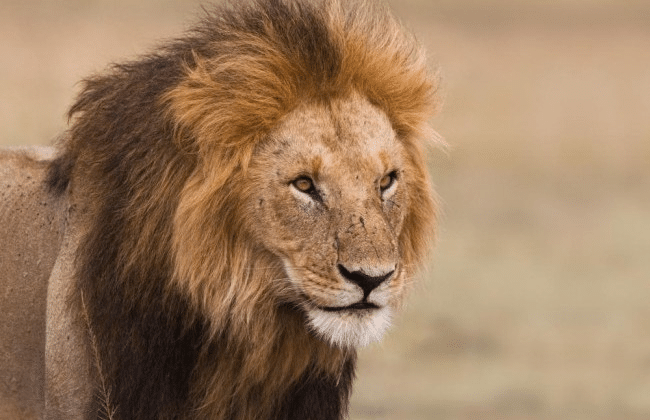
Source: google.com
There were two types of lions historically: African lions and Asiatic lions. A genetic study, however, has shown that Asiatic lions are part of the same subspecies as the Northern lion, including the Critically Endangered West African lion and the Central African lion. Southern African and East African lions make up the second subspecies.
Most traditional African safaris include sightings of Southern and East African lions. The Northern lion is more difficult to locate. You can try your luck at Western and Central African National Parks. The Asiatic lion can only be seen in the Gir National Park in the Indian state of Rajasthan.
3. Leopard (Panthera pardus)
The Leopard surprised the experts. It has the broadest range of any big cat, spanning Sub-Saharan Africa through Central Asia, then over the Indian subcontinent to Southeast Asia. While some Leopard subspecies are critically endangered, the species was considered safe until specialists discovered that the population was decreasing and leopards had lost 75% of their original range.
Leopards are found in portions of Africa and Sri Lanka. Leopards can be found in Kruger National Park, Serengeti National Park, Chobe National Park, Ngorongoro Crater National Park, and most other national parks in southern and eastern Africa.
If you visit Sri Lanka, try to avoid Yala National Park, which has become surprisingly overrun, negatively impacting animal care. Instead, visit Udawalawe National Park to view Leopards.

Source: google.com
For the more daring, there is the option of joining a local Bohai excursion to the Russian Far East in pursuit of the Critically Endangered Amur leopard, the world’s rarest form of big cat, even though their numbers have gradually increased from around 35 people in the 1980s to over 100 people in 2017.
4. Jaguar (Panthera onca)
The Jaguar is the most water-loving big cat. It is an excellent swimmer who often rests on tree branches that overhang streams. It also has the most powerful bite among big cats of its size. Its powerful fangs can shatter the skull of an adult caiman, its favourite prey in the Pantanal.
Jaguars are unique among large cat species in that they can be found all across their 6-million-square-mile range. They form a continuous population stretching over a kilometre and encompassing 18 countries. There are no subspecies of the jaguar. Taxonomically, it is the same cat that may be found worldwide.

Source: google.com
This presents new challenges for Jaguar conservation. Instead of maintaining geographically isolated populations, scientists are now working to safeguard the environmental corridors that allow Jaguars to migrate between populations and maintain gene flow between them.
The United Nations Development Programme launched the Jaguar 2030 conservation campaign in late 2018 to protect Jaguars over their entire geographic range.
The Amazon and the Pantanal in Brazil are the Jaguar’s two strongholds. However, the Pantanal is a significantly better site to see the Jaguar, particularly around Porto Jofre, a small village on the Cuiaba River’s bank.
5. Clouded Leopard (Neofelis Nebulosa)
The smallest of the big cat species, the clouded Leopard, is also the most acrobatic. It is one of the wild cat family’s most proficient climbers. It can climb down trees headfirst, hang from branches with its hind feet and tail, and even climb on horizontal branches with its back to the ground because of its flexible ankle joints.
However, climbing is not the clouded Leopard’s only skill. They are the only big cats able to purr, and their canines are the longest about their body size. They’ve been dubbed “modern-day sabre-tooths” by some.
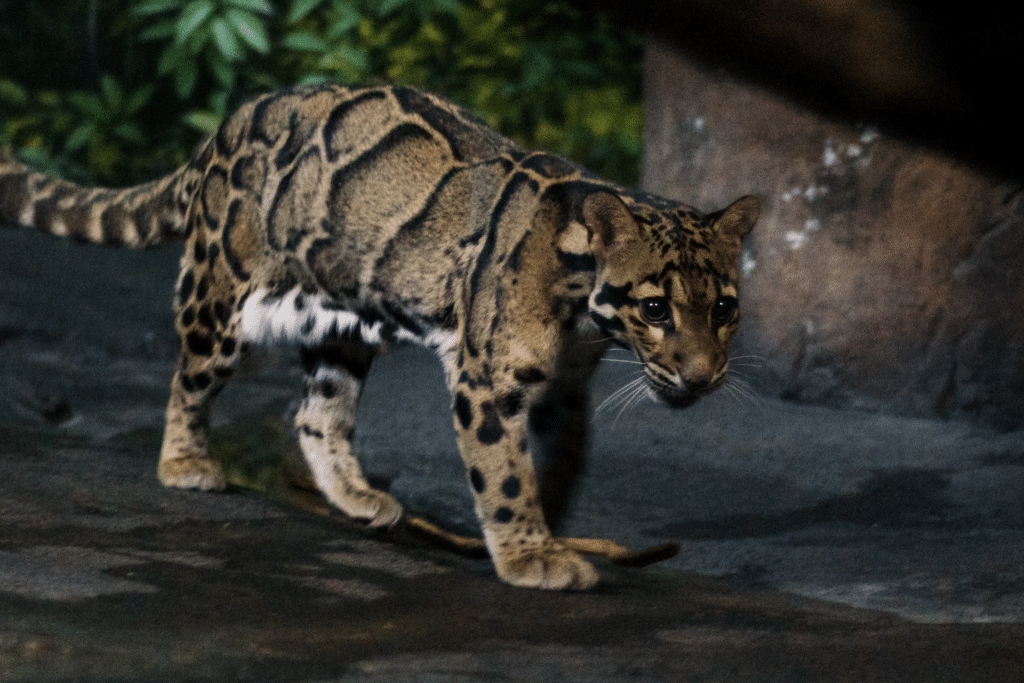
Source: google.com
Like all other big cats, the clouded Leopard is on the verge of extinction. With a declining trend, the population is predicted to be less than 10,000 mature people. Clouded Leopards, on the other hand, have received little attention and are still poorly known due to their elusive nature. As with the snow Leopard, the population may be smaller than anticipated.
The clouded Leopard is distributed from the Himalayan foothills to Southeast Asia. However, it is difficult to spot in the wild. They are occasionally seen on wildlife safaris in India. The clouded Leopard is the smallest of the big cat species but also the most acrobatic. It is one of the wild cat family’s most proficient climbers. It can climb down trees headfirst, hang from branches with its hind feet and tail, and even climb on horizontal branches with its back to the ground because of its flexible ankle joints.
6. The Snow Leopard (Panthera Uncia)
The snow Leopard, the most enigmatic of the big cats, is commonly referred to as the “Ghost of the Mountains,” and sighting one is thought to be more difficult than seeing God in Nepal. This elusive cat lives in one of the most challenging environments on the planet: the Central Asian high-altitude mountain ranges, and each individual roams over huge regions.
The IUCN downgraded the snow leopard from Endangered to Vulnerable in 2017 due to its widespread distribution. The Snow Leopard Trust, on the other hand, challenged the decision due to a lack of scientific proof. Snow Leopards are thought to number between 3,920 and 6,390 in the wild, according to experts.
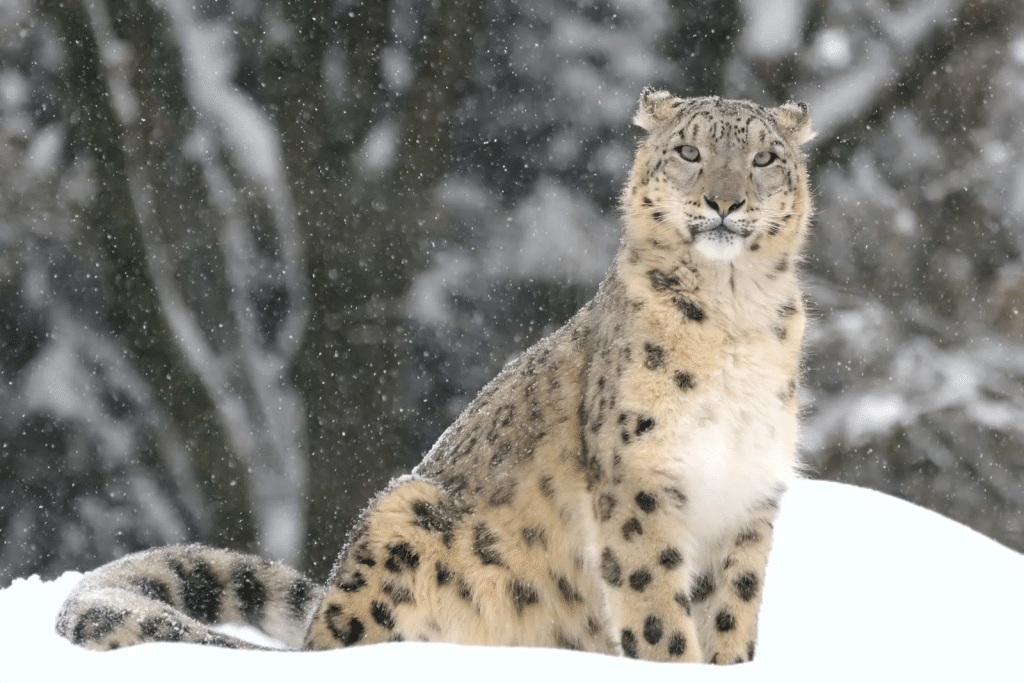
Source: google.com
Snow Leopards are commonly observed in India’s Hemis National Park, despite what the Nepalese believe. It is, however, not for the faint of heart. Camping in -20-degree cold and combing mountain valleys for hours in pursuit of the elusive cat are part of the adventure. The snow Leopard’s coat of grey fur with black patches allows it to blend in so well that you may be staring at it and not notice it.
7. Clouded Leopard Sunda (Neofelis diardi)
Until 2016, the clouded Leopard was regarded to be a single species. However, DNA research revealed that the clouded leopards of Borneo and Sumatra are different species that split from their mainland counterparts 1.5 million years ago.
Sunda clouded Leopards, the island type, are slightly smaller and darker than mainland clouded leopards. Until recently, sighting a Sunda clouded Leopard was as tricky as seeing one on the mainland.

Source: google.com
However, in recent years, Deramakot Forest Reserve in the Malaysian state of Sabah on the island of Borneo has become the go-to site for spotting these elusive felines. There are no guarantees, but Deramakot is the most excellent place to witness a Sunda clouded Leopard.
8. Ocelot (Leopardus pardalis)
This is the most diversified wild cat species lineage. It features eight little spotted cats native to Latin America. This lineage is unique because its members have 36 chromosomes rather than 38!
South America, Central America, Mexico, and Southern Texas are all home to the Ocelot. It is most likely the most common, or at least the least unusual, of the South American wild cats.

Source: google.com
Barro Colorado Island in Panama has the most significant ocelot density in the world. The Transpantaneira highway in northern Pantanal, Brazil, is another excellent area to look for the spotted hunter. The San Francisco Farm in the southern Pantanal is the most excellent site to see them. On a single night trip, I saw three Ocelots, all of which were reasonably comfortable and at close range.
9. Margay (Leopardus wiedii)
The margay looks similar to the larger ocelot but is a much better climber. The margay, unlike the ocelot, spends most of its time in the trees. It is one of only three wild cat species with a flexible ankle joint, allowing it to climb down trees headfirst (the other two are the clouded leopard and the marbled cat).
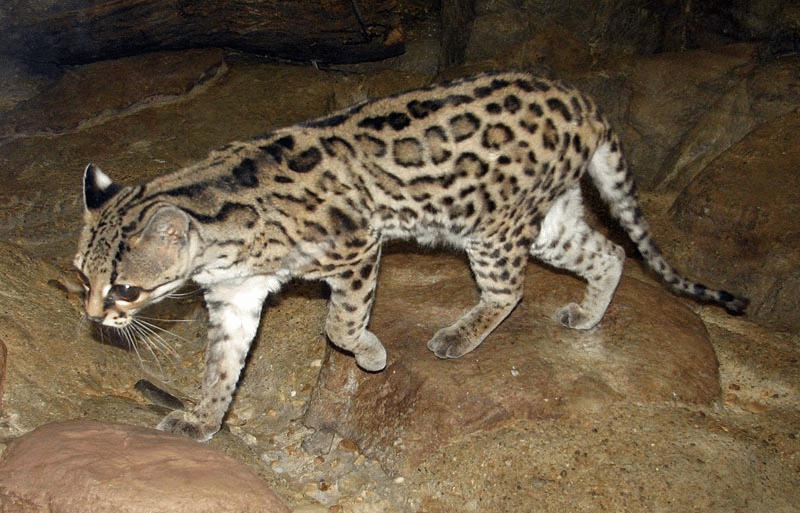
Source: google.com
Margays can hunt exclusively in the trees. To ambush them, they have been seen mimicking the alarm calls of baby pied tamarins.
Tree cats are often more challenging to see than their ground-dwelling counterparts. Margay is said to be found in the Wildsumaco Lodge in Ecuador.
10. Puma (Puma concolor)
While the Puma is a large cat, it does not belong to the big cat family. Hence it is classified as a small cat. Pumas, often known as cougars or mountain lions, are found in South America, Mexico, the United States, and Southern Canada.
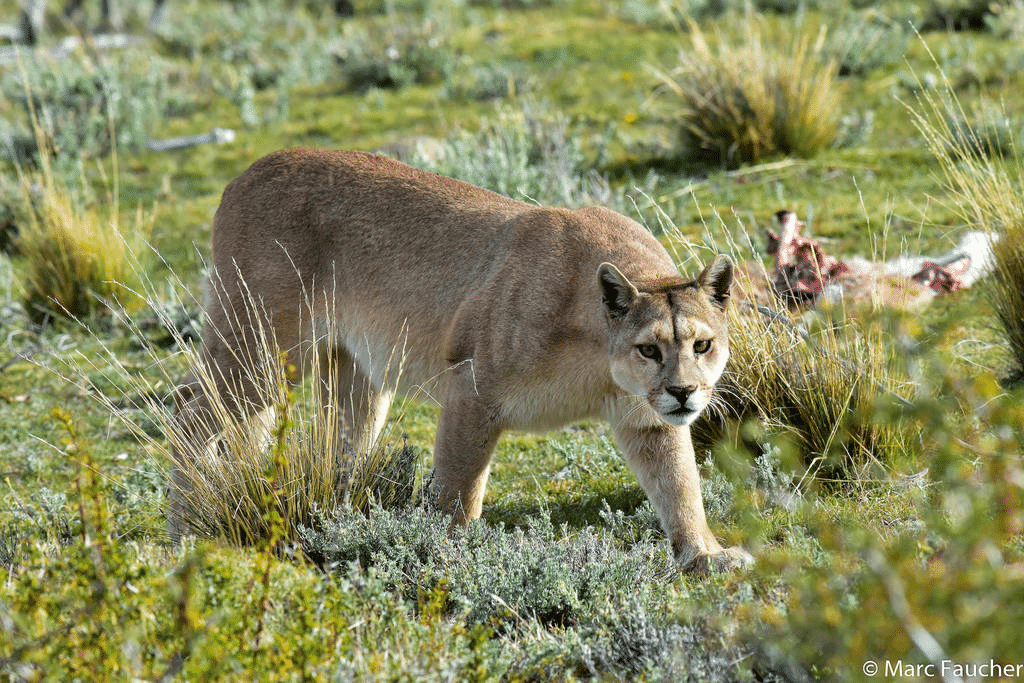
Source: google.com
Torres del Paine National Park in Chile is the finest site to see a Puma. However, I observed a puma with two sub-adult cubs in the Puma Valley of Costa Rica’s Corcovado National Park.
Conclusion
At first appearance, the Lion appears to be the best climber of all the big cats. With their enormous bodies and powerful muscles, lions are among the most elegant and graceful big cats in the wild.
Tigers, on the other hand, obviously win when it comes to climbing skills. Tigers are noted for their incredible agility and strength when climbing trees and other barriers, making them among the strongest climbers in the animal kingdom.
While Lions are among the most agile and graceful large cats, tigers are unrivalled in climbing skills.
For more related information, click here.
FAQs
Which cat family is capable of climbing trees?
The Felidae are the tree-climbing cat family.
Which cats can descend trees head first?
Cats are well-known for their agility and ability to climb. But which cats can scale trees headfirst? According to the response, only North American cats can climb down trees head first.
